Artemis, also call the Diana, the Greek goddess of the hunt, wilderness, childbirth, and virginity, has been a source of fascination for centuries. Throughout history, artists have attempted to capture her power and beauty through sculptures. In this blog post, we will explore some of the most famous sculptures of Artemis, discuss the benefits of owning a marble statue of her, and provide tips on where to find and purchase one.
Famous Artemis Sculptures
The world of art is full of exquisite sculptures of Artemis. Here are some of the most famous ones:
1.Diana the Huntress
Diana the Huntress, also known as Artemis the Huntress, is a famous sculpture that depicts Artemis as a hunter with a bow and arrow, accompanied by her faithful hound. The statue was created by Jean-Antoine Houdon in the late 18th century and is now housed at the National Museum of Natural History in Washington, D.C.
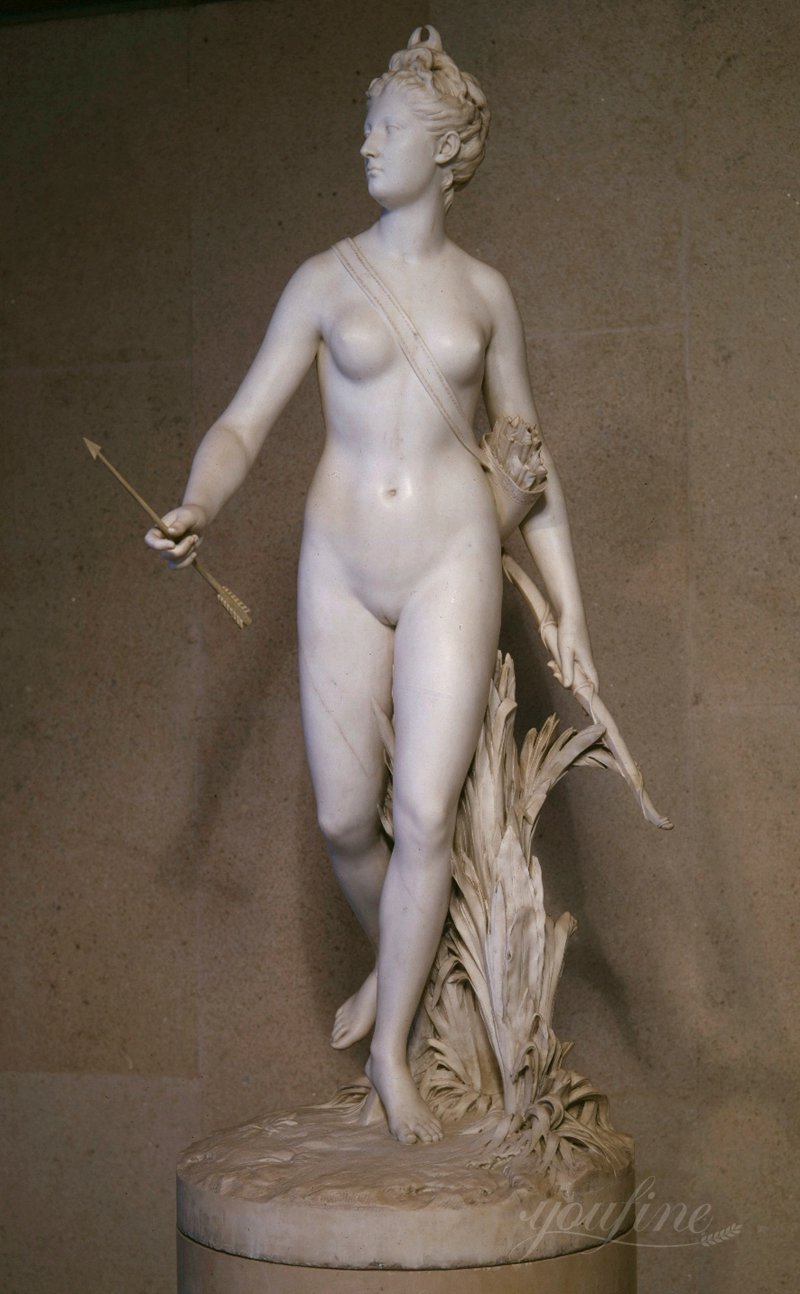
2.The Artemis Versailles
The Artemis Versailles is a statue of Artemis that was created in the 17th century and is now housed in the Palace of Versailles in France. The statue depicts Artemis as a young woman, holding a bow and arrow and accompanied by a hound.
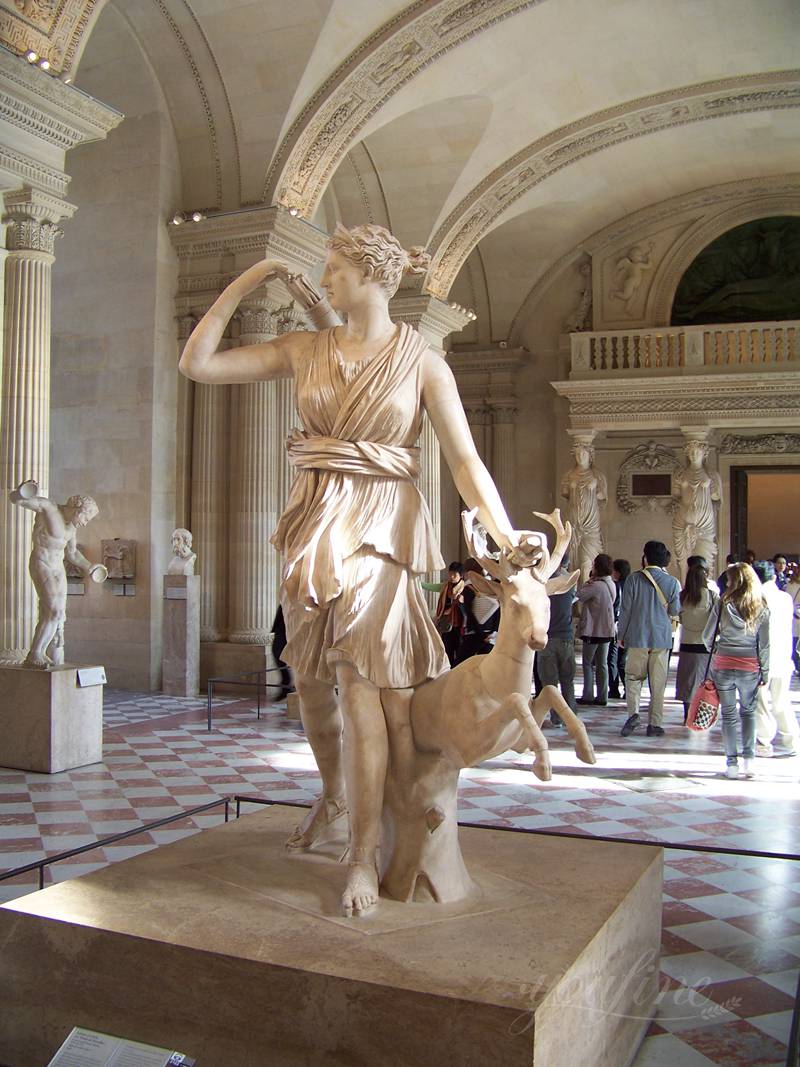
3.The Artemis of Gabii
The Artemis of Gabii is a sculpture of Artemis discovered in the ancient city of Gabii, near Rome, in the early 20th century. The statue dates back to the 2nd century AD and depicts Artemis as a young woman with a quiver of arrows on her back.
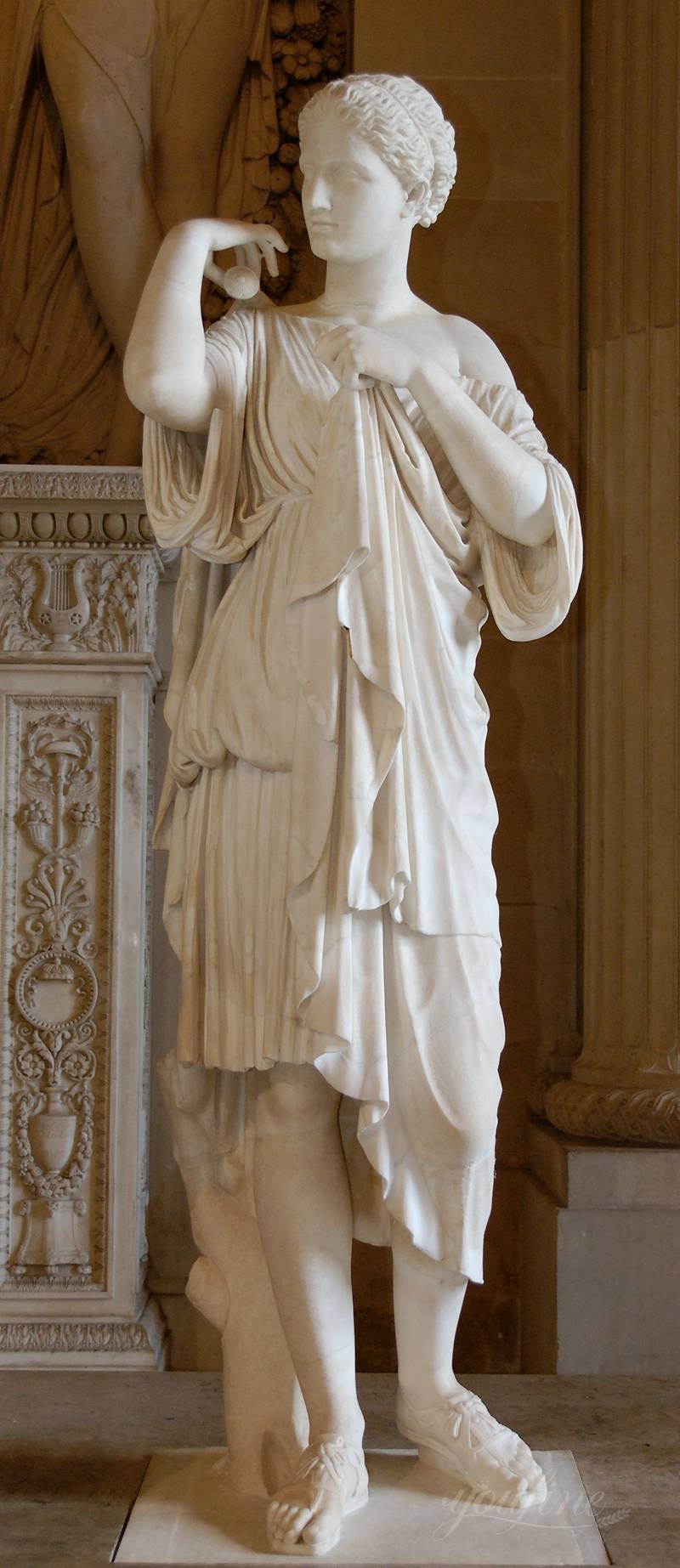
4.The Artemis of the Villa of the Papyri
The Artemis of the Villa of the Papyri is a sculpture of Artemis discovered in the ancient city of Herculaneum, near Naples, in the 18th century. The statue dates back to the 1st century BC and depicts Artemis as a young woman with her hair in a bun, holding a bow and arrow.
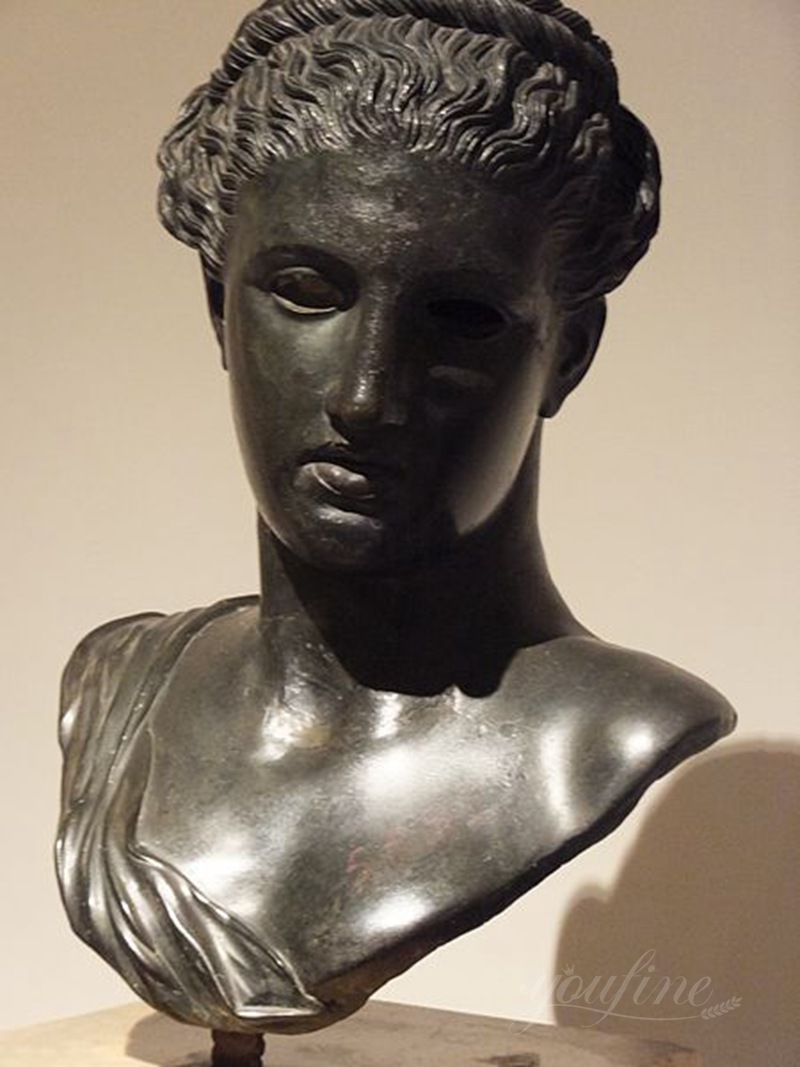
5.Diana and her Nymphs
Created by Jean Goujon in the 16th century, this statue shows Diana accompanied by her nymphs. It is housed in the Louvre Museum.
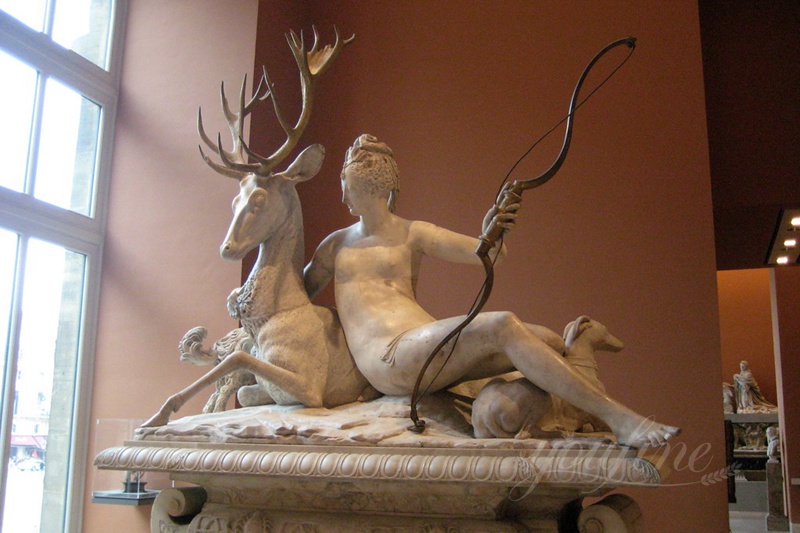
6.Diana the Huntress by Giuseppe Giorgetti
This sculpture depicts Diana as a huntress, with a bow and a quiver of arrows on her back. It is housed in the Victoria and Albert Museum in London.
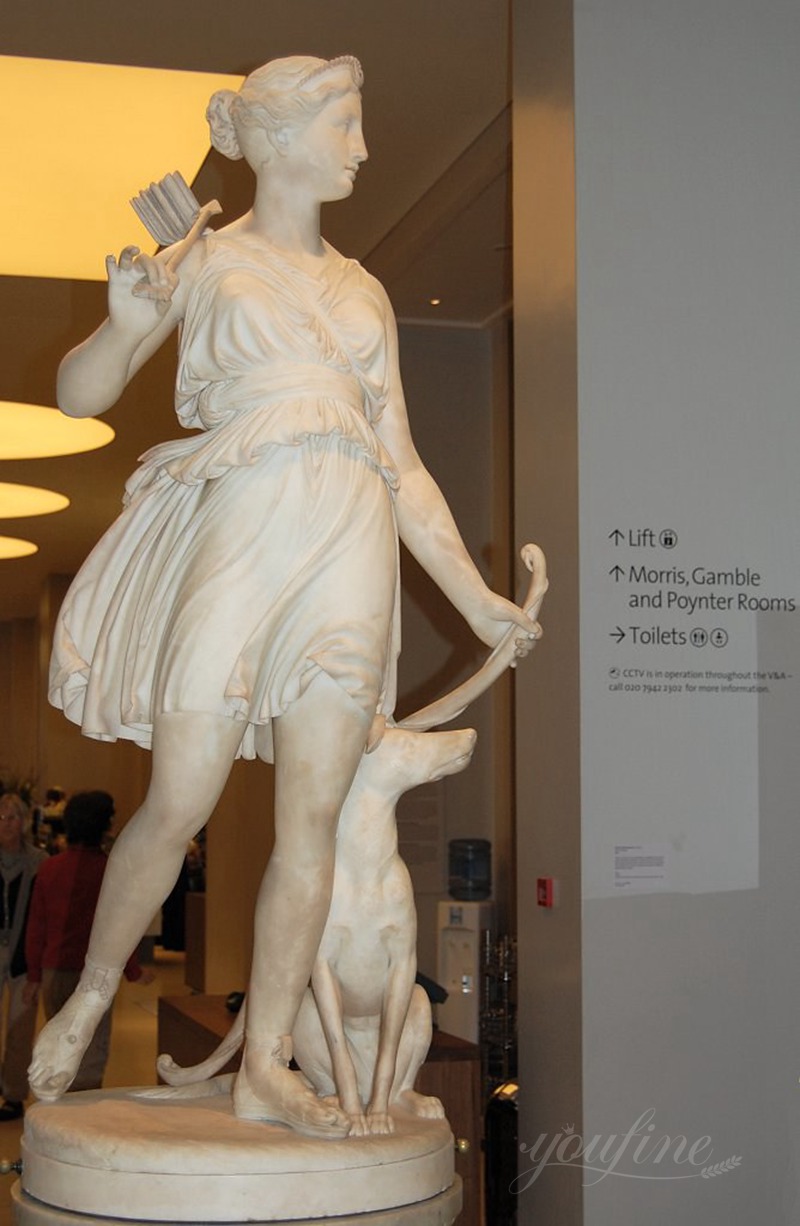
7.Diana and Actaeon
This sculpture by Paul Manship depicts Diana and her hounds catching Actaeon, who had stumbled upon her bathing. It is housed in the Metropolitan Museum of Art in New York City.
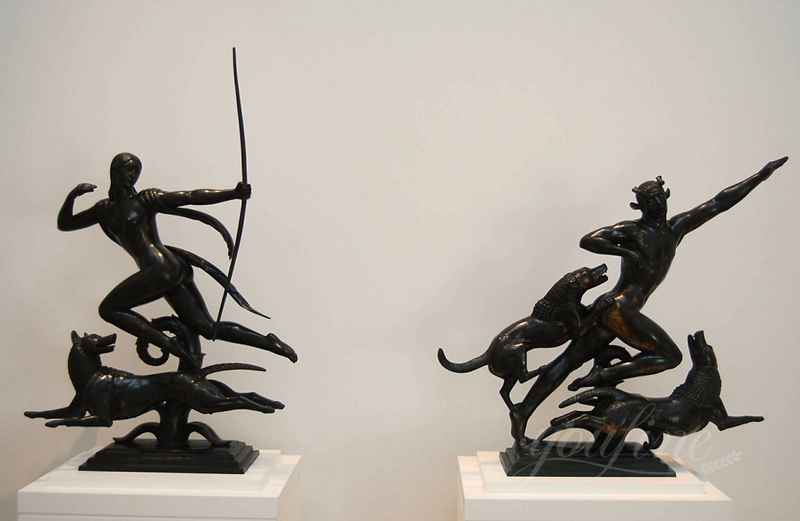
8.Diana as Huntress
Marble by Bernardino Cametti, 1720. Pedestal by Pascal Latour, 1754. Bode Museum, Berlin.
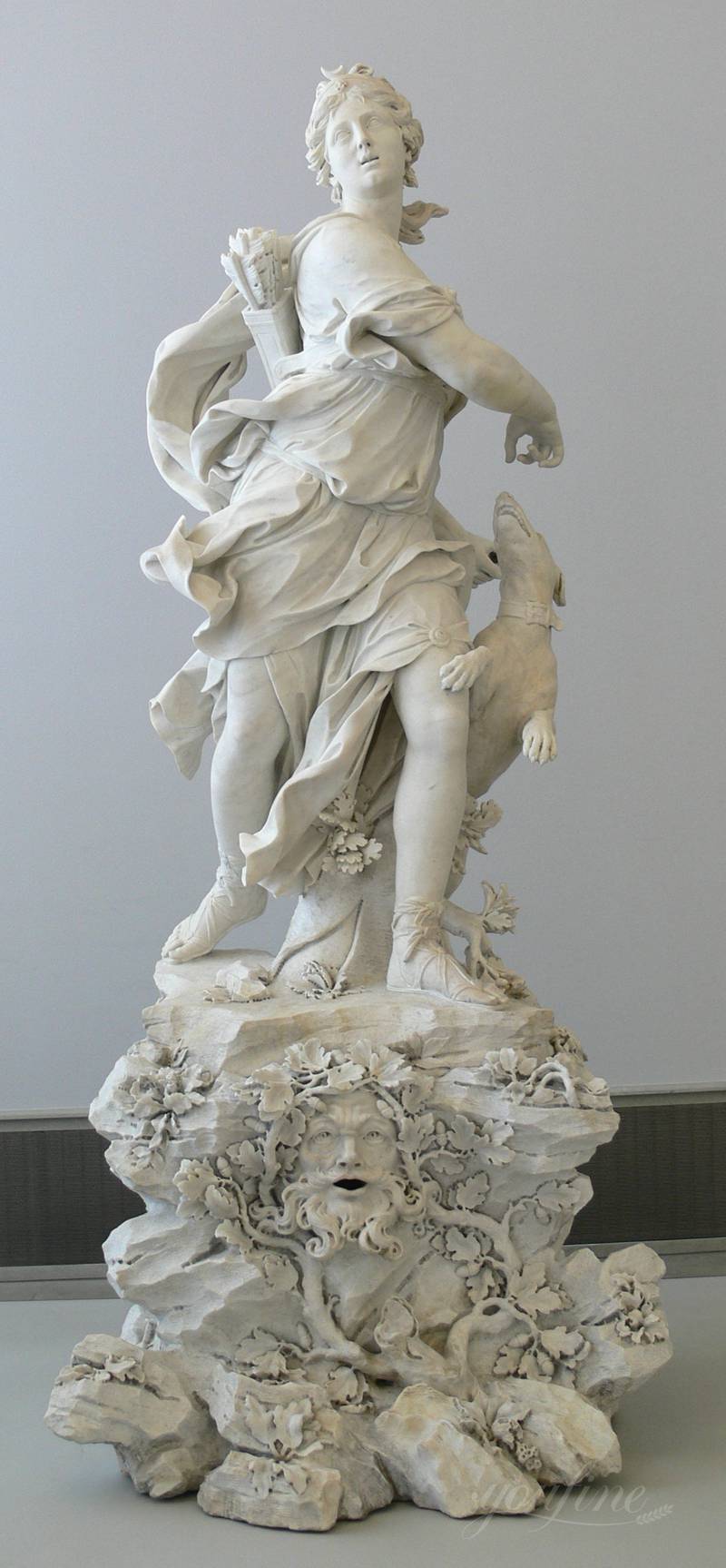
9.The Artemis of the Rospigliosi
This ancient Roman sculpture is now located in the Palazzo Rospigliosi in Rome, Italy. It depicts Artemis as a young woman with her hair in a bun, holding a bow and arrow and accompanied by a hound.
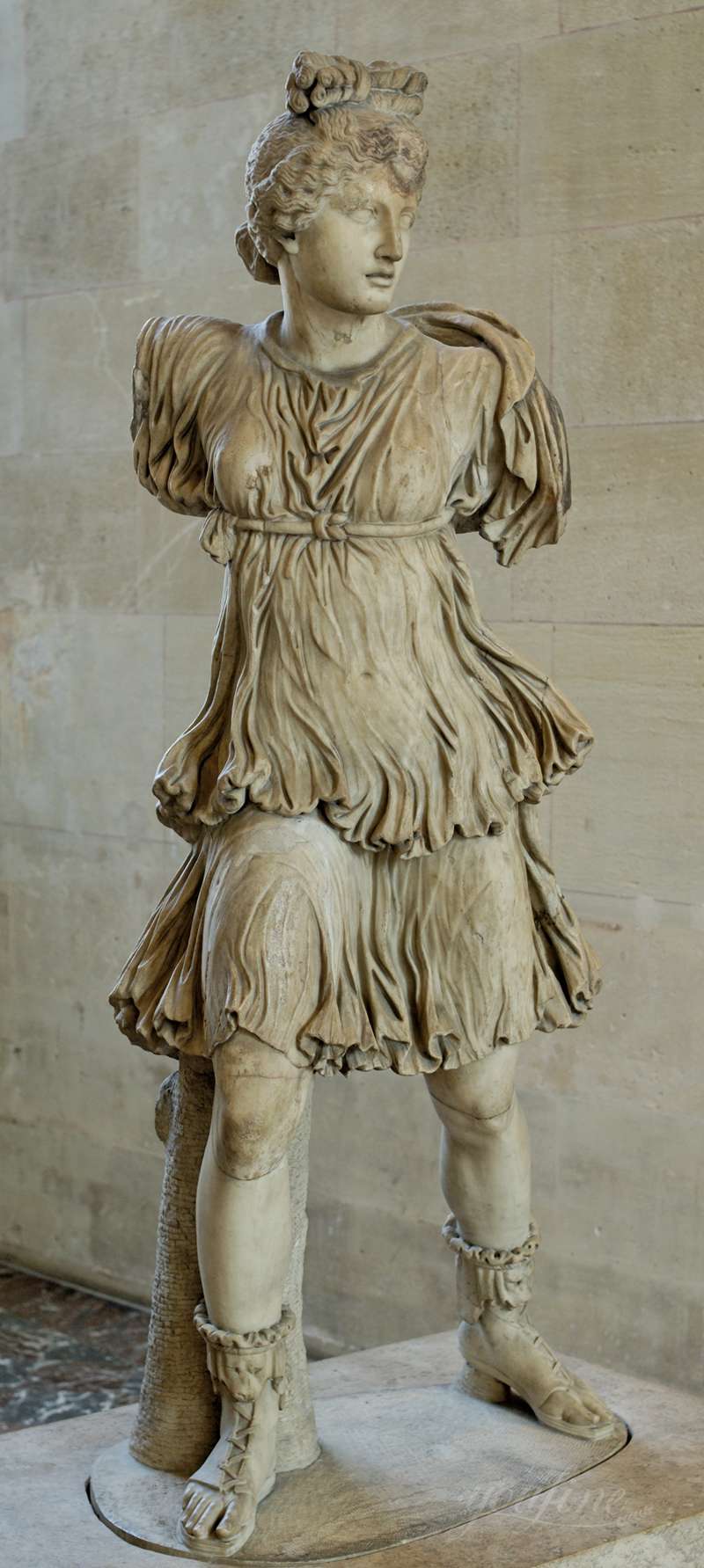
10.The Louvre Artemis
This Anselme Flamen, Diana (1693–1694) sculpture is located in the Louvre Museum in Paris, France. It depicts Artemis as a young woman, holding a bow and arrow and accompanied by a hound.
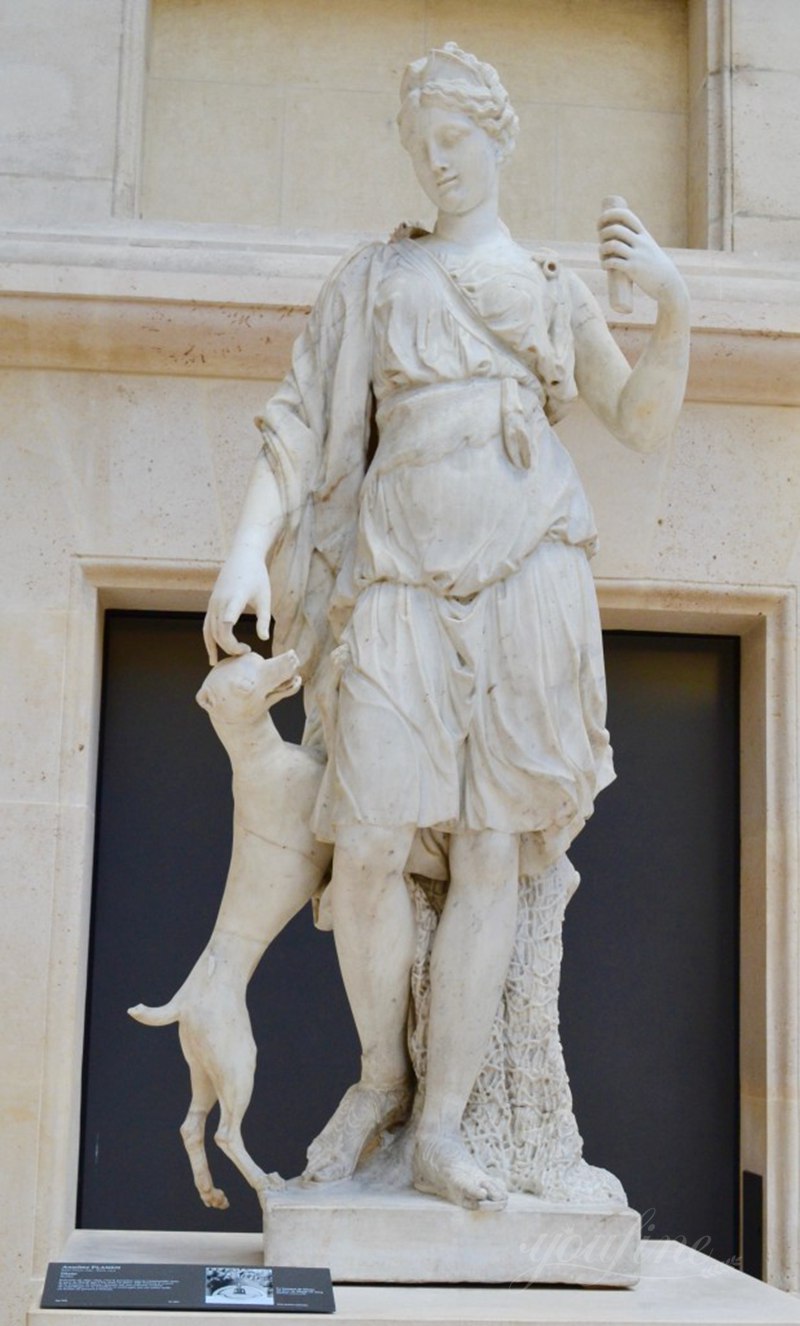
11.C.G Allegrain, Diana (1778) Louvre
Diana. Marble, 1778. Madame Du Barry commissioned the statue for her castle of Louveciennes as a counterpart for the Bather by the same artist.
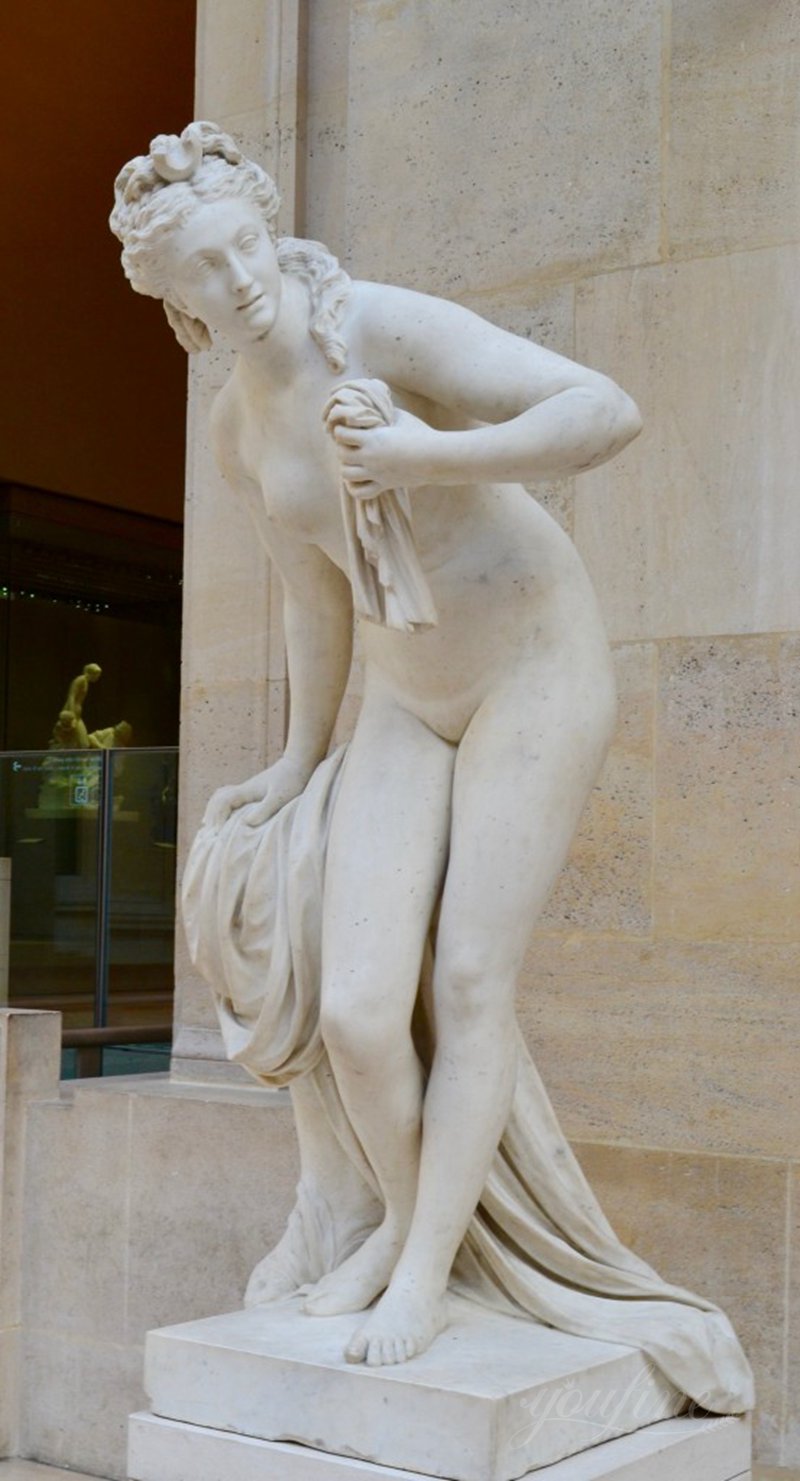
12.A Companion of Diana
Lemoyne’s Companion of Diana, finished in 1724, is one of the outstanding statues in the series executed for the garden of Marly by several sculptors, full of a sense of movement and life, colourfully and gracefully interpreted. There may well be in it some influence of Le Lorrain, while in the nymph’s dialogue with her hound the influence of Frémin’s earlier statue in the same series seems overt. Even the effective gesture of the nymph’s arm crossing her body echoes the similar gesture in Frémin’s treatment, while a basic influence on the whole concept – perhaps for both sculptors – must have been Coysevox’s Duchesse de Bourgogne as Diana. which dates from 1710. That had been commissioned by the Duc d’Antin for his own château, but there is a sense in which all the ‘Companions of Diana’ are companions to Coysevox’s famous figure.
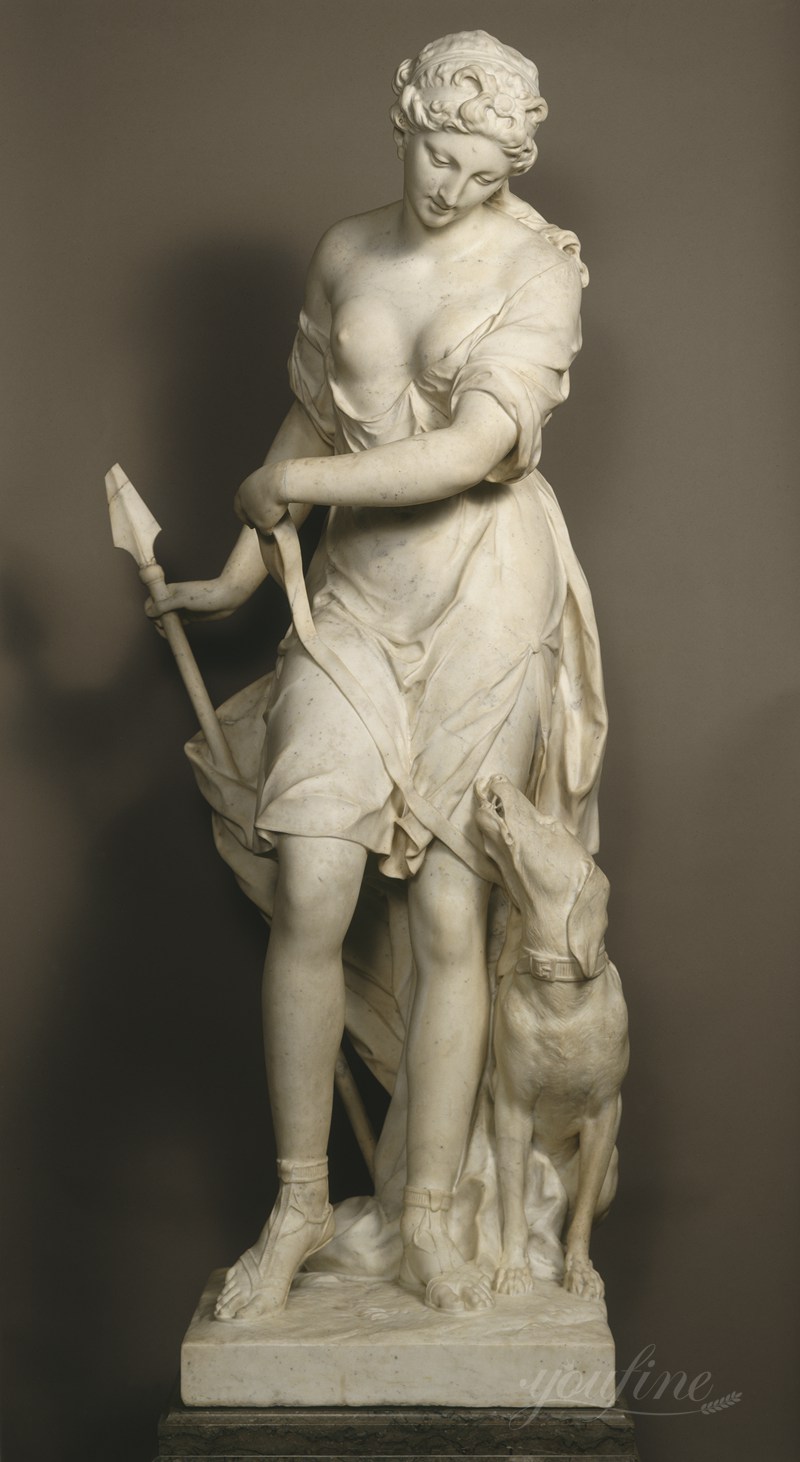
13.Another A Companion of Diana
1717
Marble, height 180 cm
Musée du Louvre, Paris
The nymph turns her head away and down, even as she steps briskly forward, expostulating half-playfully with the extremely lively greyhound which rears up at her side, its forepaws on her bow. As she gazes down, a smile hovers over her face (a typical Fremin touch), while the hound arches itself back in frisky anticipation. Vitality imbues the whole concept.
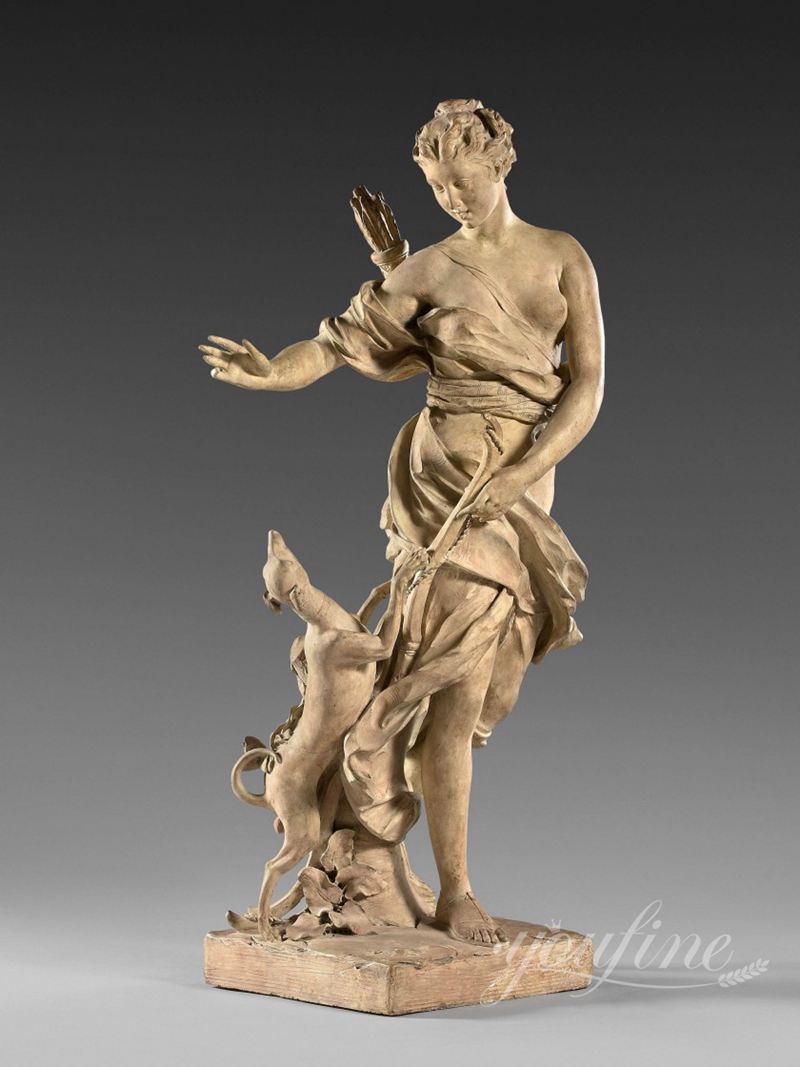
14.Statue of Artemis from Mytilene
Artemis was the goddess of the moon, forest, and hunting. She stands on her left leg while her right arm rests on a pillar. The left hand rests on the waist and its palm is facing outward. Her head would have carried a diadem. She wears two snake-like armlets. The boots leave the toes exposed. Her clothes are rather stiff, especially at the hips. This statue is regarded as being not a good specimen of its kind. Marble. Roman Period, 2nd to 3rd century CE, copy of a Hellenistic original dating to the 4th century BCE. From Mytilene, Lesbos, in modern-day Greece. (Museum of Archaeology, Istanbul, Turkey).
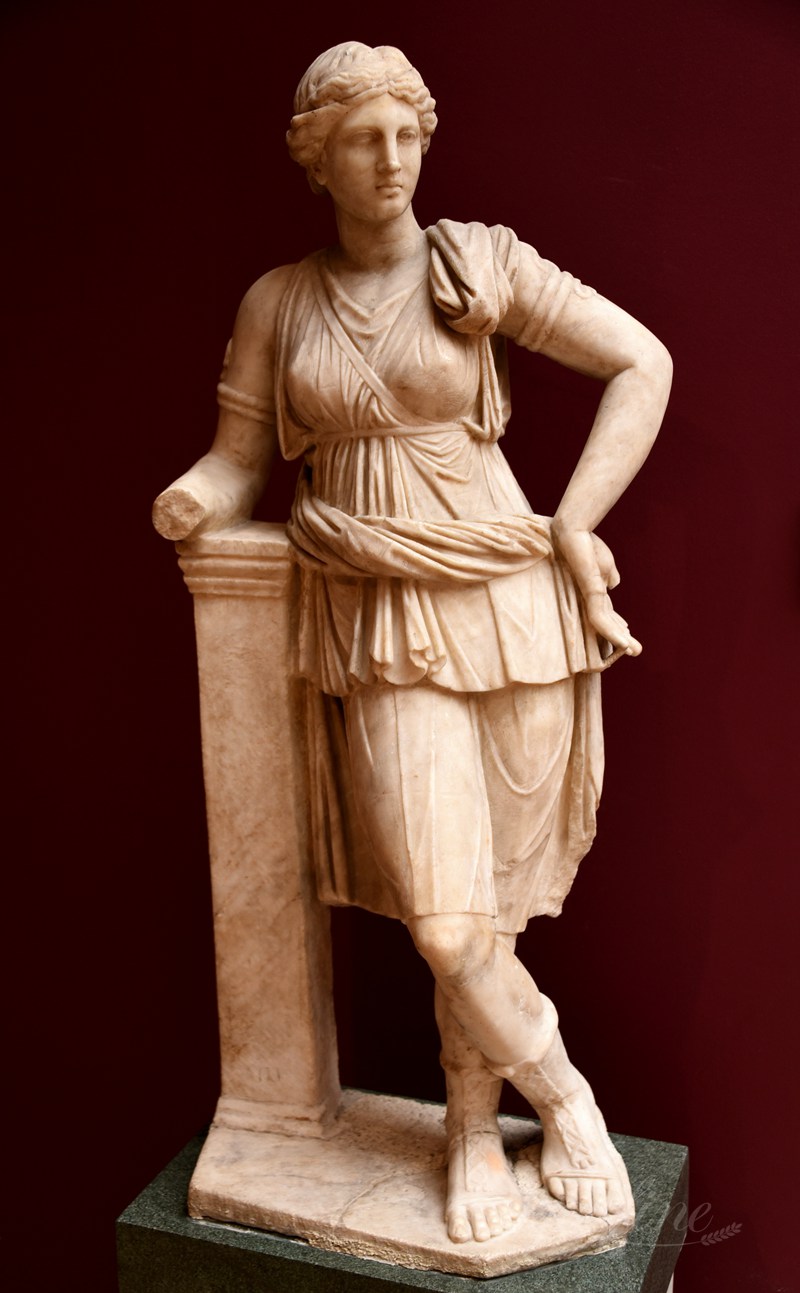
15.Statue of the Greek Goddess Artemis
Statue of the Greek Goddess Artemis in the Vatican Museum showing her as she was originally depicted in Greek mythology as the Goddess of the Hunt.
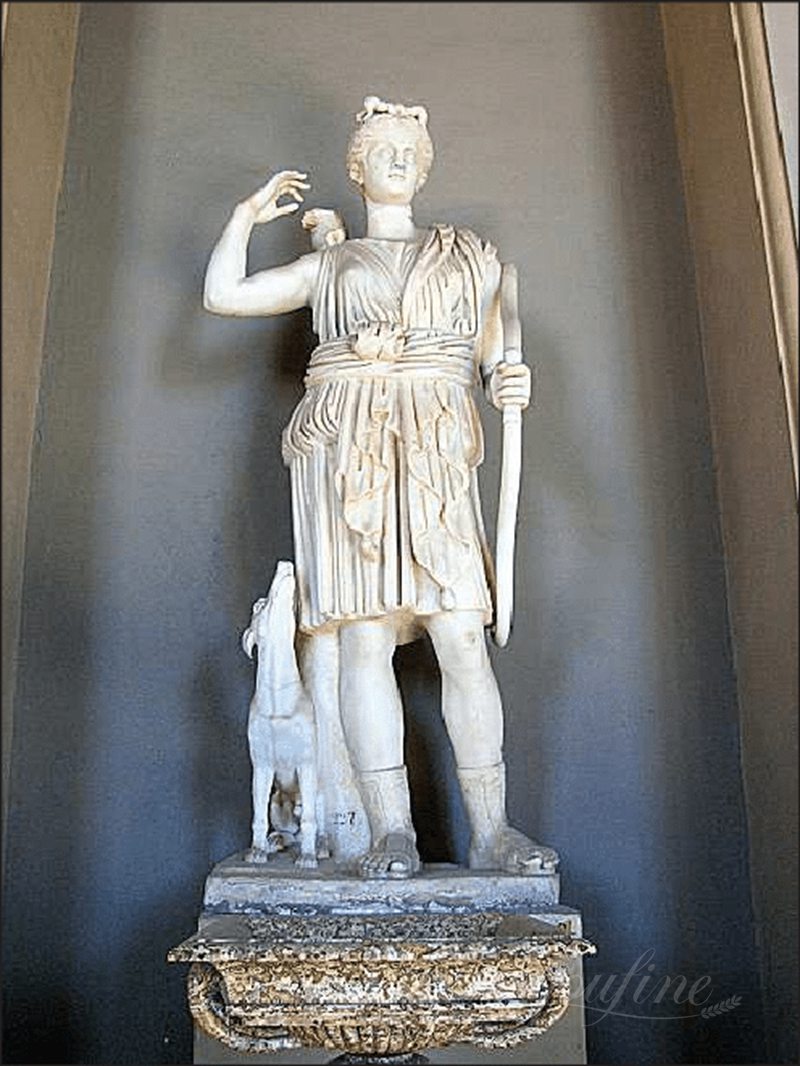
16.Statue of Artemis – Collection of Vatican Museum
Statue of the Greek Goddess Artemis in the Vatican Museum showing her as the Goddess of the Hunt but with the crescent moon as part of her headdress.
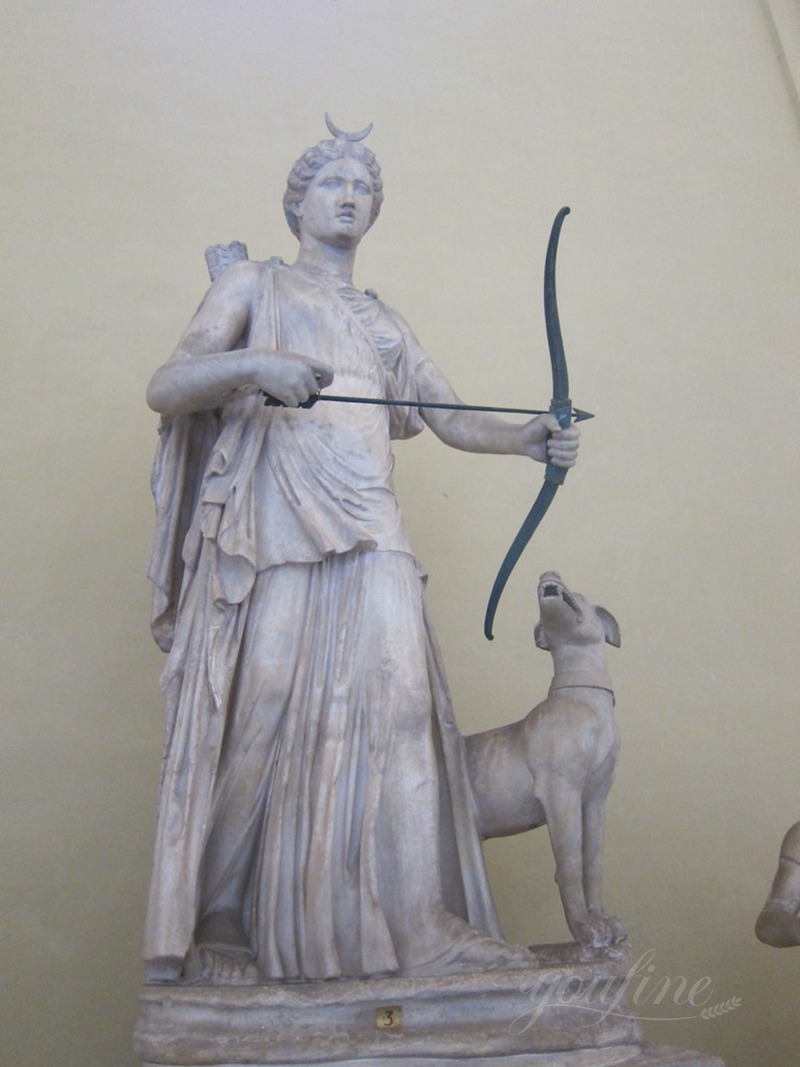
17.The Artemis of Ephesus
The Artemis of Ephesus, also known as the Ephesian Artemis, was a cult statue of the goddess that was housed in the Temple of Artemis in the ancient city of Ephesus, in what is now modern-day Turkey. The statue was one of the Seven Wonders of the Ancient World and was crafted by multiple artists over a period of several hundred years. It stood over 13 meters tall and was adorned with multiple breasts, symbolizing fertility and motherhood.
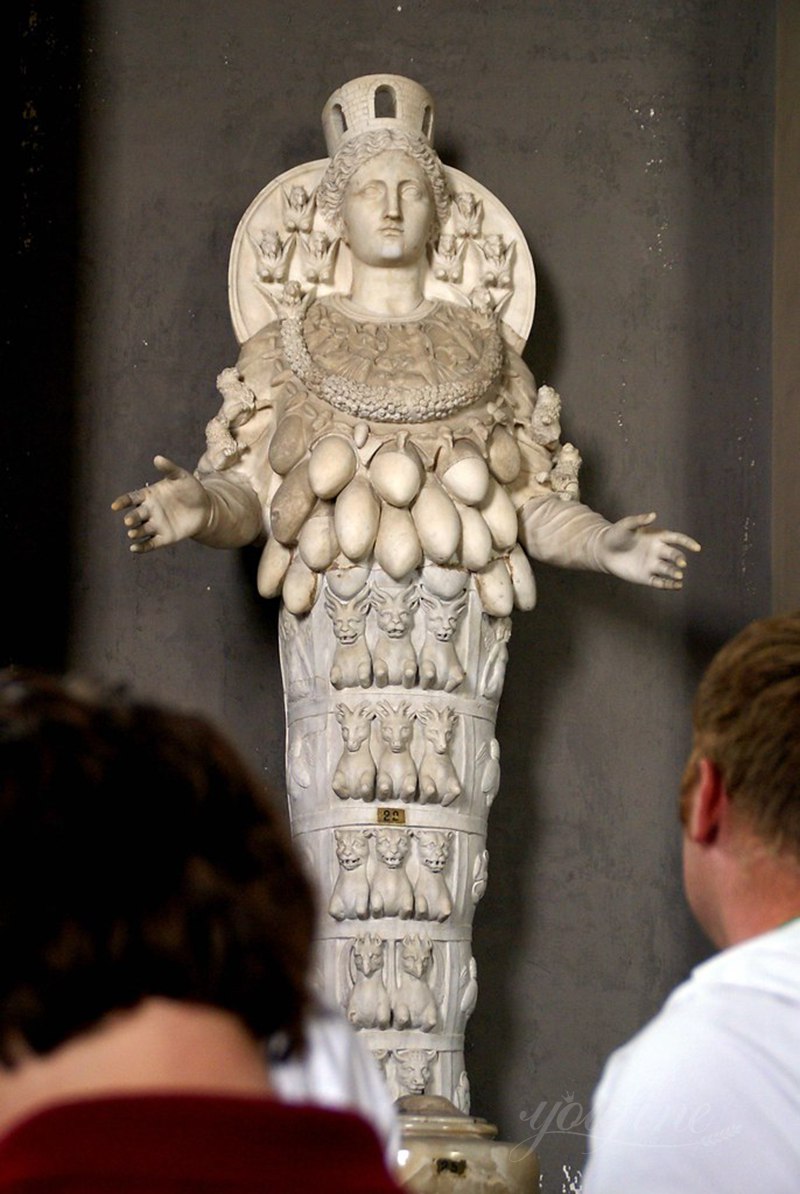
18.Young Girl as Diana (Artemis)
Young girl as Diana (Artemis), Roman statue (marble), 1st century AD, Palazzo Massimo alle Terme, Rome
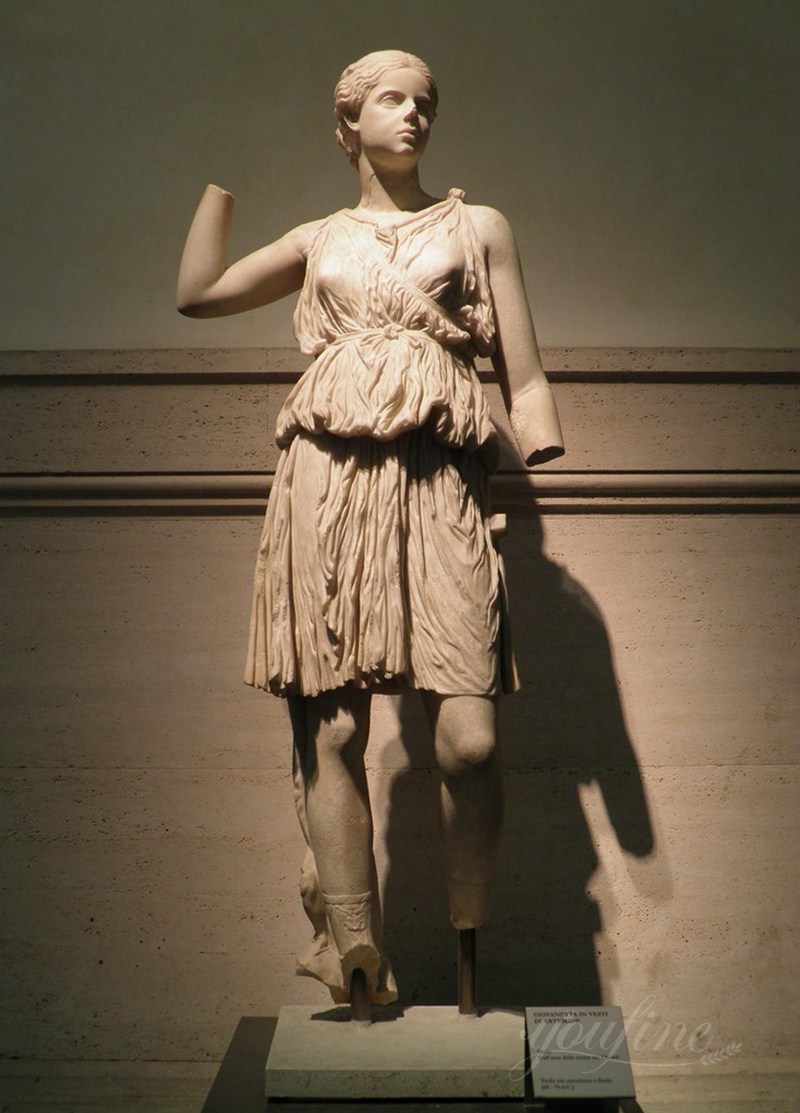
The Advantages of Owning a Marble Statue of Artemis
As can be seen from the above, we will find that there are many Artemis hunting god statues made of marble, but in fact, statues lacking marble in hunting god statues are very popular. So let’s briefly talk about the advantages of marble hunting statues. There are many benefits to owning a marble statue of Artemis. Here are a few:
Durability: Marble is a durable material that can withstand the test of time. Marble statues have been found in ancient ruins, museums, and private collections around the world, and many of them are still in excellent condition despite being hundreds or even thousands of years old.
Beauty: Marble is a beautiful and timeless material that can add a touch of elegance and sophistication to any space. Marble statues of Artemis are works of art that can be appreciated for their craftsmanship and beauty.
Investment: Marble statues of Artemis can be a valuable investment. As with any work of art, the value of a marble statue of Artemis can increase over time, especially if it is a rare or one-of-a-kind piece.
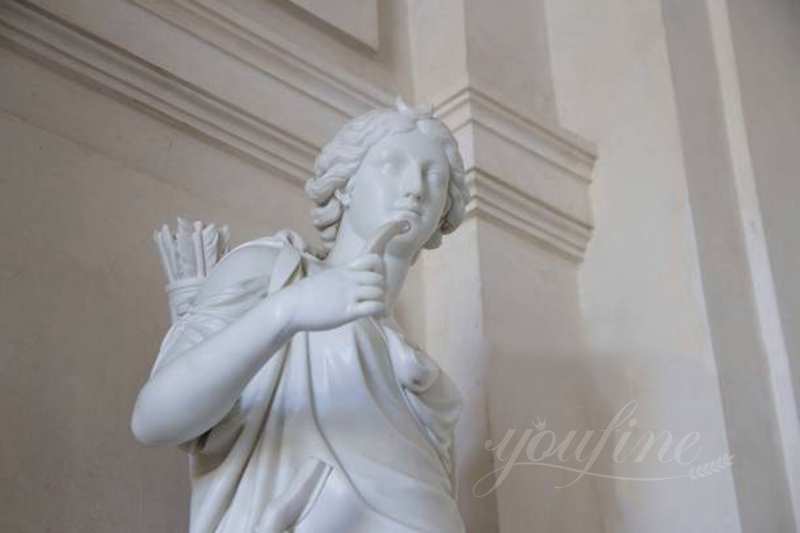
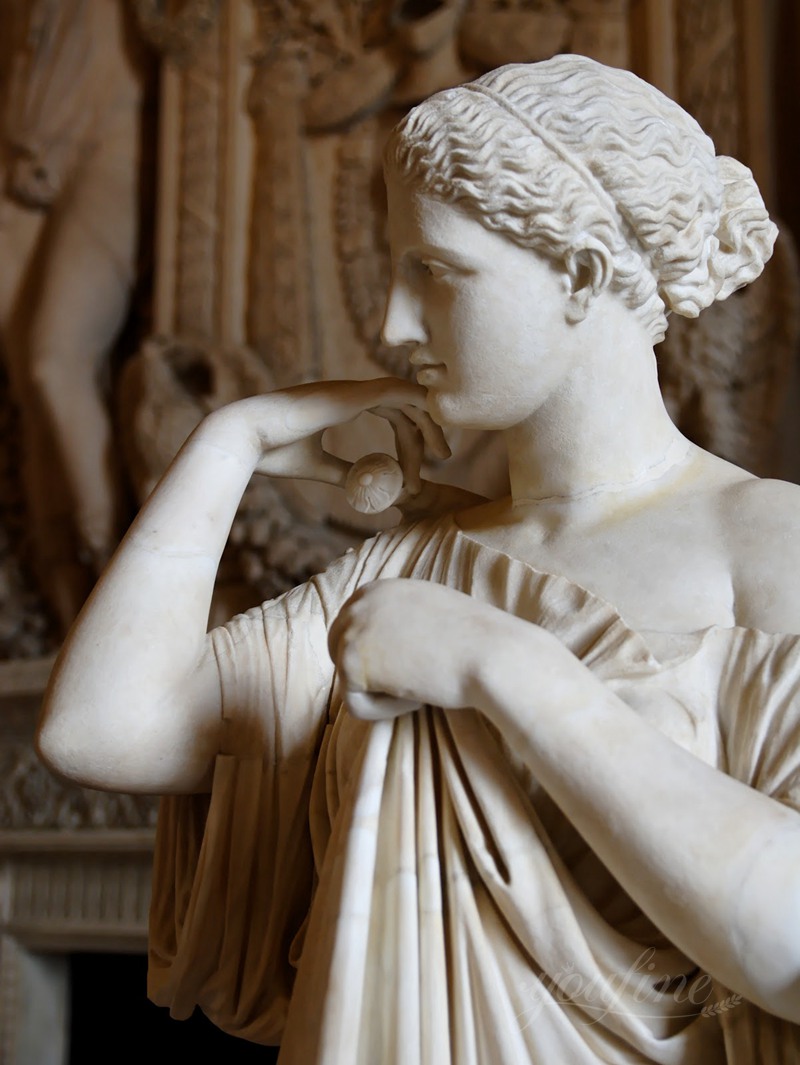
Tips for Finding and Purchasing a Marble Statue of Artemis
If you are interested in owning a marble statue of Artemis, here are some tips to help you find and purchase the right one:
Do your research: Research the seller and the sculpture thoroughly before making a purchase. Look for reviews and feedback from other customers, and make sure the sculpture is authentic and of high quality.
Consider the size: Marble statues of Artemis come in many sizes, from small tabletop sculptures to large, outdoor statues. Consider the size of your space and the intended use of the sculpture when making your purchase.
Look for a reputable dealer: Find a reputable dealer who specializes in marble sculptures and has a wide selection of Artemis statues to choose from.
Consider the cost: Marble statues of Artemis can vary in price depending on the size, quality, and rarity of the sculpture. Set a budget and shop around to find the best value for your money.
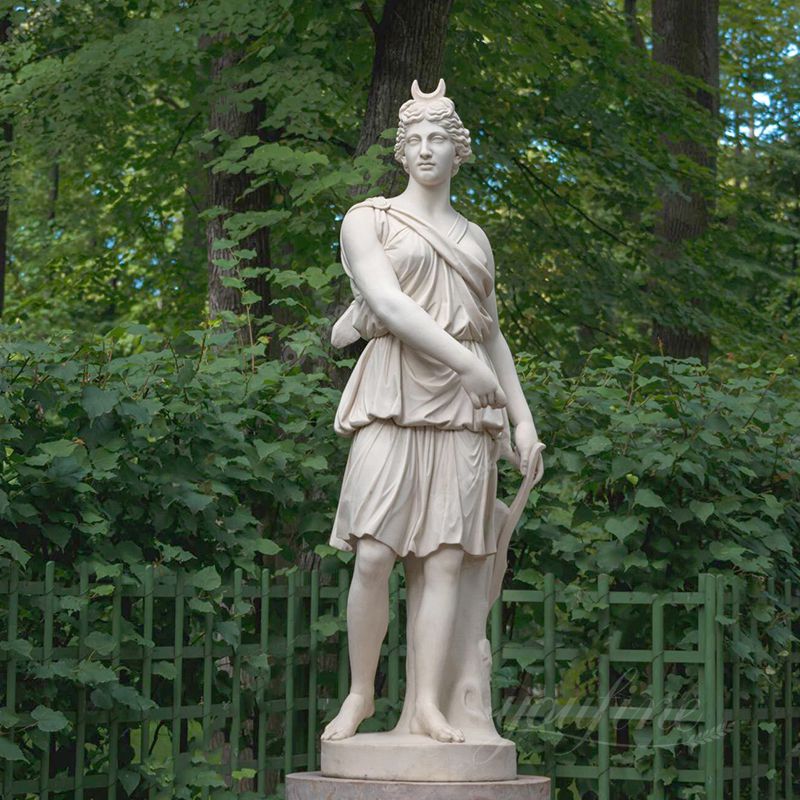
Post time: Aug-29-2023
